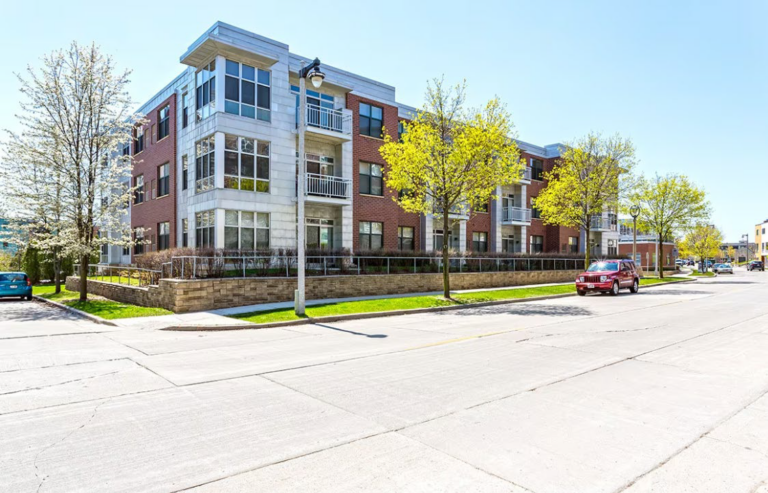October 6, 2021
15 Questions to Ask Before Investing Your Money: Part 1
As an alternative to the typical investments in stocks and bonds, real estate offers many opportunities for high-net-worth investors, family offices, and investment advisors. In addition to the standard due diligence of a specific investment opportunity, it’s important that investors also understand the intricacies of investing in any private real estate vehicle. This 4-part series will outline the core focus investors should consider and the types of questions to ask to make an informed decision before committing capital to an investment in private real estate. What is the Investment Structure? There are many ways to organize a private real estate investment. Whether it’s an individual syndication, niche fund, diversified fund or other type of specialty structure, each provides a distinct set of opportunities and risks. An individual syndication, for example, is an investment in a single property. If you invest with a developer in a ground up multi-family development, and the project goes well, that investment could generate extremely attractive returns. However, because all of your money is invested in a single property, you stand the risk of a total loss on the investment if the project doesn’t go as planned. With an individual syndication, there is no diversification achieved...
September 2, 2021
Leverage and Private Real Estate: Finding the Right Balance
We’re all familiar with the sentiment surrounding “there’s risk present in every investment”, and this holds true for private real estate. As investors consider the plethora of allocation options available to them in today’s connected world, it’s important to be aware of the potential risks present in any investment. All too often, people will dive into a deal because it touts a high Internal Rate of Return (IRR) on paper, but they fail to take any time to peel back the onion and analyze the set of assumptions that lead to that shiny number. While there are certainly several variables that impact the risk/reward of an investment, one of the most overlooked items is how much debt, otherwise known as leverage, a manager is using to finance the deal. Let’s take a deeper look at how increased leverage can enhance the returns generated by an investment, while it also inherently increases the risk to the investor. Why Leverage? For anyone who is a homeowner, you likely already understand the implications of debt financing without even realizing it. The concept is simple – if you put 5% down on your home and borrow 95% from the bank, your monthly payment will be...
August 26, 2021
5 Steps to Take Following a Liquidity Event
As an investor, there may come a point in time where you experience a liquidity event; that is, a transaction in which you exchange your position in an asset for cash. Examples of liquidity events can include a sale of a property, business, or stock, or even proceeds from an inheritance. No matter what got you to this point, there are several things to consider when it comes to putting your capital back to work. Outline your new investment objectives You now have liquid cash on hand, and your investment opportunities have widened greatly. So, what now? The first thing you should do is re-evaluate your investment objectives. With a large influx of cash, you most likely will want to re-invest to keep up with the current market. Think about whether you’d like to actively invest in another venture or explore more passive options. How much time can your capital remain in an investment vehicle before you’d need access to the cash again? What is your current tax situation and how might various strategies impact those opportunities should you need to switch gears? Before handing off your money, it is helpful for you to think through these concepts. Keep in mind that...
August 5, 2021
Why We Believe the Legacy Fund is the Superior Real Estate Exit Strategy
Over the course of the last few decades, many investors have experienced significant success in the world of real estate ownership. The cash flow, appreciation, and tax benefits provided can be powerful; however, owners of appreciated real estate often find themselves in a bind as they consider divesting their portfolio. After years of long-term ownership, investors are ready to sell and move out of the active oversight of their property, but often have very little basis remaining and as a result can face material capital gain taxes. Though there are ways to potentially defer the realization of these gains, conversations of changes to the tax code leave many in this situation wondering: “what options do I have?” What tax-deferred strategies exist? Possible tax deferred exit strategies include selling the property in a 1031 exchange of “like-kind” property, investing in a Delaware statutory trust (DST) with the proceeds from sale, or contributing the property into an UPREIT. Although each of these exit strategies may potentially achieve tax deferral, they also come with some common shortfalls. Common shortfalls of other tax deferred exit strategies: 1031 Exchange – Timing constraints, trade risk, single asset risk and require active management or oversight DSTs –...
July 29, 2021
Do You Have Your Own Board of Directors?
Wealth preservation is more than a one-person job; the advice of a diverse set of resources play an important role in creating and executing your overall wealth preservation strategy. While we’ve got real estate investment covered at MLG Capital, some of our best advice for wealth preservation is to build your own personal board of directors! Understanding the roles of those that can serve on your personal board of directors is a key starting point. Let’s review some of the most widely used types of folks that could add value to you in your life goals. Advisors: Who “runs” your money? Do you have a trusted resource to help you execute your overall financial objectives? Do you have an asset allocation strategy to ensure you’re aligned for different market cycles, cash flow needs, and a plan to manage through economic cycles? A financial advisor can provide material input when structuring your overall financial plan. Tips, tricks, and analysis on market allocation strategies merit a key seat on your personal board of directors. CPAs: There are a slew of considerations when addressing your overall tax strategies. For example, when establishing a wealth preservation plan, you’d likely want to ensure you’re operating as efficiently as...
June 22, 2021
Why Contributing Property to the Legacy Fund Could be More Than a Smart Financial Decision
When planning an investment, it’s important to understand the impact it will have for you financially and the time and effort required to oversee that investment. What if one could alleviate the entire burden of ownership without losing the financial component? What value would you place on having more time with the people you love or doing what you love? When selling property and seeking to defer tax, investors often consider 1031 exchanges, Delaware Statutory Trusts or UPREIT transactions. While those offerings enable owners to defer tax, they may have some shortfalls, including time constraints, high fees, single asset risk, and/or public market volatility. While partnering with MLG Capital to navigate the waters of a 1031 exchange could be a better alternative than conventional tax-deferred solutions, an even better idea may be to partner with MLG Capital and contribute your property to the Legacy Fund. Unlike our series of closed-end funds, like Private Fund V, the Legacy Fund is perpetual and designed to allow accredited investors to contribute real property into the fund. It’s a compelling exit strategy for high-net-worth investors with appreciated real estate assets. There are three main benefits to contributing to the Legacy Fund. Passive Ownership Diversification Tax Efficiency One of...
June 22, 2021
West Grove Apartments: Recognizing Opportunity
When we talk about value-add, we are striving to create value by increasing the operational income of an asset. Alex Brackman recently shared the story of Camelback Flats (fka Sienna Springs) and today, I’m going to share another: West Grove Apartments. In 2017, we had the opportunity to purchase West Grove Apartments, a 476-unit multifamily property located in Waukesha, Wisconsin (Milwaukee MSA), off-market. Prior to the purchase, the asset had been family-owned and managed for over 30 years. The property needed significant capital improvements to the interior units and common areas, and there was also the opportunity to enhance the day-to-day property management of the asset. Still, we were very intrigued at the opportunity to purchase a property of this size, boasting over 20 different floor plans, including 80 townhomes, and plenty of green space which surrounded its very own lake! Once we dug into the granular details and zoomed out to review the rest of submarket, we knew this was a great investment to pursue. After thoroughly analyzing the asset by inspecting all units and common areas, we then reviewed the greater submarket and the competing properties and formulated our value-add plan. The tenants of today demand a best-in-class amenity package,...
June 4, 2021
How Real Estate can Handle Higher Interest Rates caused by Inflation
Today, many investors are concerned that inflation is coming back, and interest rates are on the rise. How would these factors impact private real estate investing? Many incorrectly think private real estate acts like how bonds do in rising interest rate environments (i.e. inflation rises, interest rates go up, bond values down). I don’t believe this is the case. Why can private real estate handle higher interest rates? First, you need to ask: “why are interest rates rising?” Most of the time, higher interest rates are driven by a stronger economy triggering inflation, leading to higher interest rates. Unlike bonds, which have a fixed coupon rate, private real estate has a variety of lease expirations for tenants. This allows sponsors to raise the lease rates as leases mature. A strong economy leads to the following enhancements to revenue: Higher rental rates – Rates can simply rise by inflationary pressures. However, the story is bigger. For example, In Albuquerque, New Mexico, where occupancy rates have hit the 96-97% range. Despite the COVID-19 impact, we were able to raise average rents on a particular multifamily property from $1,050/mo to $1,200/mo over the past year, a 14% rise. While this is an extreme example, it...
May 14, 2021
Tax and Cash Flow Advantages with MLG
I can guarantee you get just as excited about taxes as I do. Okay, maybe not, but hopefully you will be excited to learn about the tax benefits of real estate investing! We know taxes don’t make investors’ list of favorite things about investing, but at MLG Capital, we understand the importance of providing investors with the knowledge they need about their taxable income and the cash flow benefits because, quite frankly, it can be very confusing. While tax efficiency is not the sole driver of your investment decision-making, it is helpful to know the types of tax advantages that investing in private real estate can offer, depending on your tax situation. Part of our focus on doing “smart” deals is considering opportunities that make sense for our investor’s overall financial picture. From a tax standpoint, we use strategies like cost segregation studies and bonus depreciation to create tax and cashflow benefits. Let’s look at our historical approach to how we utilize these methods to benefit each of our funds’ taxable income and the overall benefit to our investors. Fund Cash Flow Benefits Since the inception of our fund structure in 2012, we have developed a great track record of generating cash flows throughout our investments. Cash flow is income opportunity that is generated primarily from property operations such as: rental income, property sales**, and refinancing. Cash flow generated by the Funds can then be distributed to investors or used to acquire/improve properties. These resources are crucial to each Fund’s health, as they are used to improve properties (in our value-add strategy scenarios) and used to distribute cash to investors. In the charts below, you...
May 4, 2021
Two Investment Options: MLG Capital Private Fund and MLG Dividend Fund
Author info Everyone loves options in life and when you invest in our Private Real Estate funds, you can choose from two Fund options to best suit your personal objectives. When Private Fund IV launched in 2018, we introduced a new concept, “the Dividend Fund” as we’ve called them, in conjunction with our historic fund offerings. We’re excited to continue offering this dual structure for investors in our latest funds. While both fund options invest in the same underlying assets across each Fund, both fund options present different tax implications to investors. Let’s take a deeper dive. Why two fund options? One of the primary reasons we created the Dividend Fund structure was to better accommodate tax-advantaged accounts (i.e., IRAs, 401(k)s, etc.). Without this structure, investors using these types of accounts could face unnecessary tax due to Unrelated Business Taxable Income. UBTI is generally incurred by tax-exempt investors when participating in private real estate funds (in our case) due to the fund utilizing leverage on fund assets. The Dividend Fund structure aims to eliminate the risk of UBTI for investors using tax-advantaged accounts. What’s the same? Both fund options invest in the same assets regardless of which option you...









